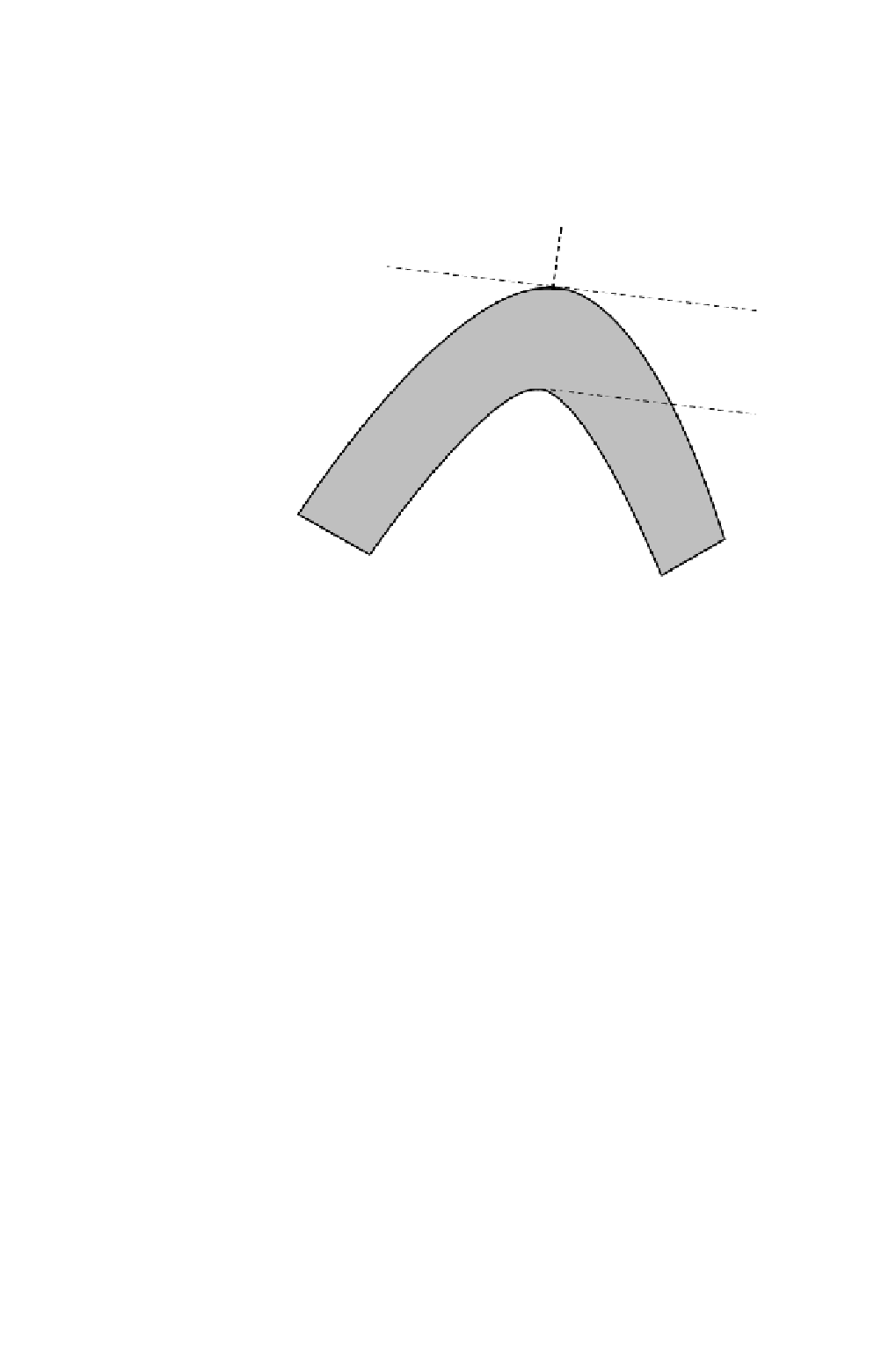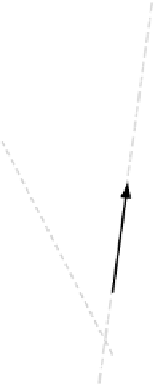Geoscience Reference
In-Depth Information
Fold
class
Dip isogon
geometry
Orthogonal
thickness
Axial trace
thickness
1A
1B
1C
2
3
convergent
convergent
convergent
parallel
convergent
increases
constant
decreases
decreases
decreases
increases
increases
increases
constant
decreases
a
t
0
,
T
0
a
T
a
t
a
90º
Fig. 4.120
Definition sketch for the geometric elements described for Ramsay's fold classification. The table shows all fold classes included and
their principal characteristics.
4.16.3
Kinematic models
Flexural folding has two principal modes: orthogonal
flexure (Fig. 4.124) and flexural shear (Fig. 4.125).
Orthogonal flexure is a kinematic model in which the
outer convex surface of the layer experiences an increase
in length whereas the inner concave surface is shortened.
The stretched and shortened parts of the fold are
separated by a neutral surface that maintains the original
length. This folding model is called orthogonal flexure
because lines initially perpendicular to the layer surfaces
remain perpendicular in the deformed state. Flexural
shear or flexural flow is achieved by simple shearing paral-
lel to the surface of discrete segments of the folded layer.
Individual surfaces slide like a deck of cards when folded
without experiencing shortening or lengthening. Folds
can further evolve after being formed by flexural folding
by homogeneous flattening, which can produce thinning
or thickening of parts of the fold, giving folds of classes
1A or 1C. Folds can be further deformed or exaggerated
by flattening without changing their basic geometry
(Fig. 4.126).
The basic deformation model for the formation of a fold is
the
flexural folding
of a rock layer, which produces
class 1B or parallel folds, which are those that preserve
homogeneous thickness along the layer. There are
two mechanisms give rise to flexural folding; bending and
buckling. Bending is formed when pairs of forces
or torques equal in magnitude and opposed are applied
normal or at high angles to points of a layer, producing the
rotation that causes the bend of wave instability to form
(Fig. 4.122). Typical examples include the formation of
folds in sedimentary layers located over faulted rigid base-
ments, motion of the blocks on each side of fault. Buckling
consists of the application of forces equal and opposed at
the ends of a layer. Forces are applied parallel to the layer
extension, producing a compression, which forms a bend
in the layer. Buckling is one of the chief folding mecha-
nism in fold and thrust belts in orogenic settings
(Fig. 4.123).












Search WWH ::

Custom Search